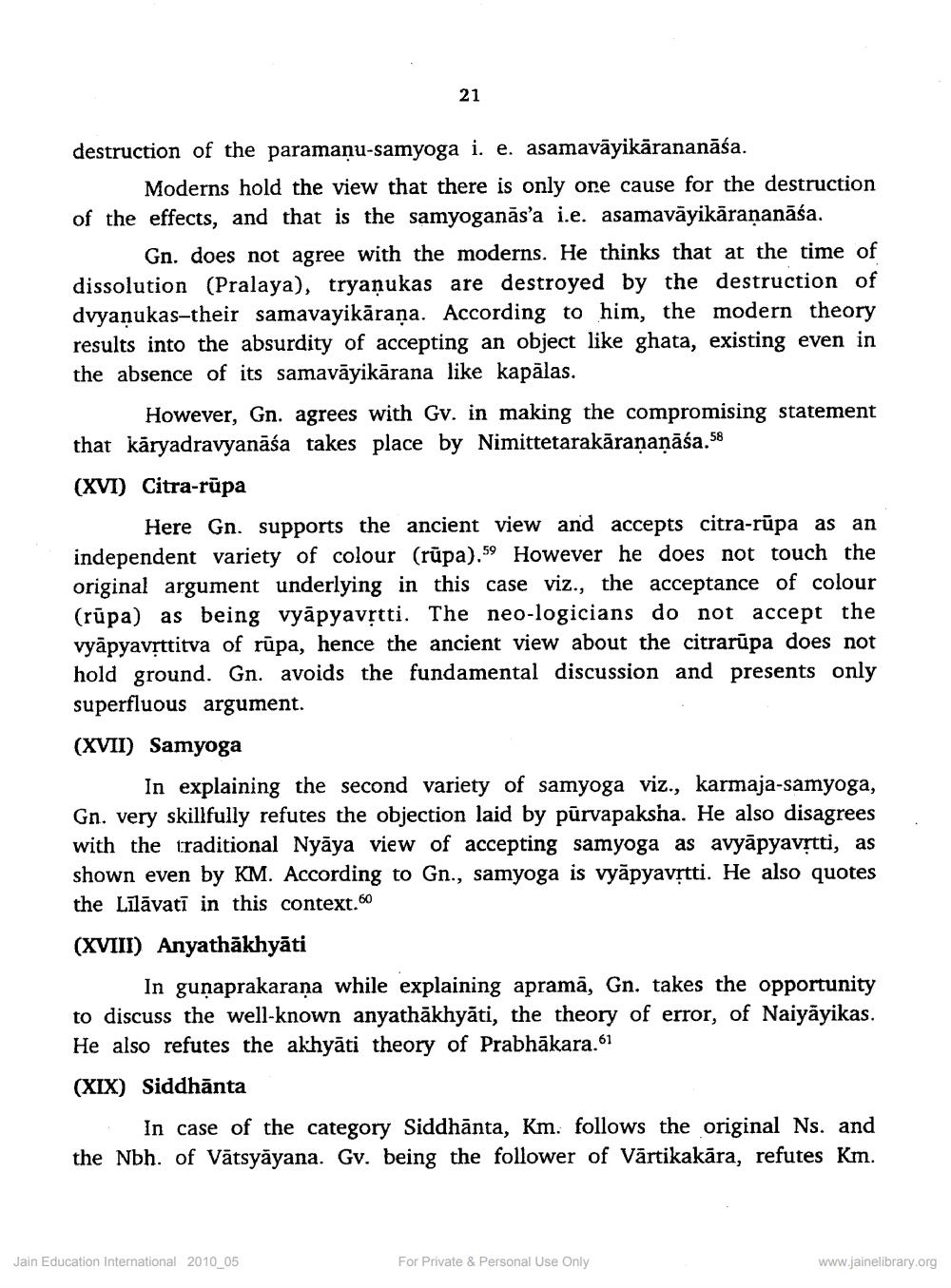________________
21
destruction of the paramaņu-samyoga i. e. asamavāyikārananāśa.
Moderns hold the view that there is only one cause for the destruction of the effects, and that is the samyoganās'a i.e. asamavāyikāraṇanāśa.
Gn. does not agree with the moderns. He thinks that at the time of dissolution (Pralaya), tryaņukas are destroyed by the destruction of dvyanukas-their samavayikāraṇa. According to him, the modern theory results into the absurdity of accepting an object like ghata, existing even in the absence of its samavāyikārana like kapālas.
However, Gn. agrees with Gv. in making the compromising statement that käryadravyanāśa takes place by Nimittetarakārananāśa.58 (XVI) Citra-rūpa
Here Gn. supports the ancient view and accepts citra-rūpa as an independent variety of colour (rūpa).59 However he does not touch the original argument underlying in this case viz., the acceptance of colour (rūpa) as being vyāpyavrtti. The neo-logicians do not accept the vyāpyavrttitva of rūpa, hence the ancient view about the citrarūpa does not hold ground. Gn. avoids the fundamental discussion and presents only superfluous argument. (XVII) Samyoga
In explaining the second variety of samyoga viz., karmaja-samyoga, Gn. very skillfully refutes the objection laid by pūrvapaksha. He also disagrees with the traditional Nyāya view of accepting samyoga as avyāpyavrtti, as shown even by KM. According to Gn., samyoga is vyāpyavrtti. He also quotes the Līlāvatī in this context.60 (XVIII) Anyathākhyāti
In guņaprakaraṇa while explaining apramā, Gn. takes the opportunity to discuss the well-known anyathākhyāti, the theory of error, of Naiyãyikas. He also refutes the akhyāti theory of Prabhākara.61 (XIX) Siddhānta
In case of the category Siddhānta, Km. follows the original Ns. and the Nbh. of Vātsyāyana. Gv. being the follower of Vārtikakāra, refutes Km.
Jain Education International 2010_05
For Private & Personal Use Only
www.jainelibrary.org




